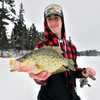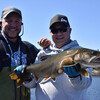
The Great White(fish) North
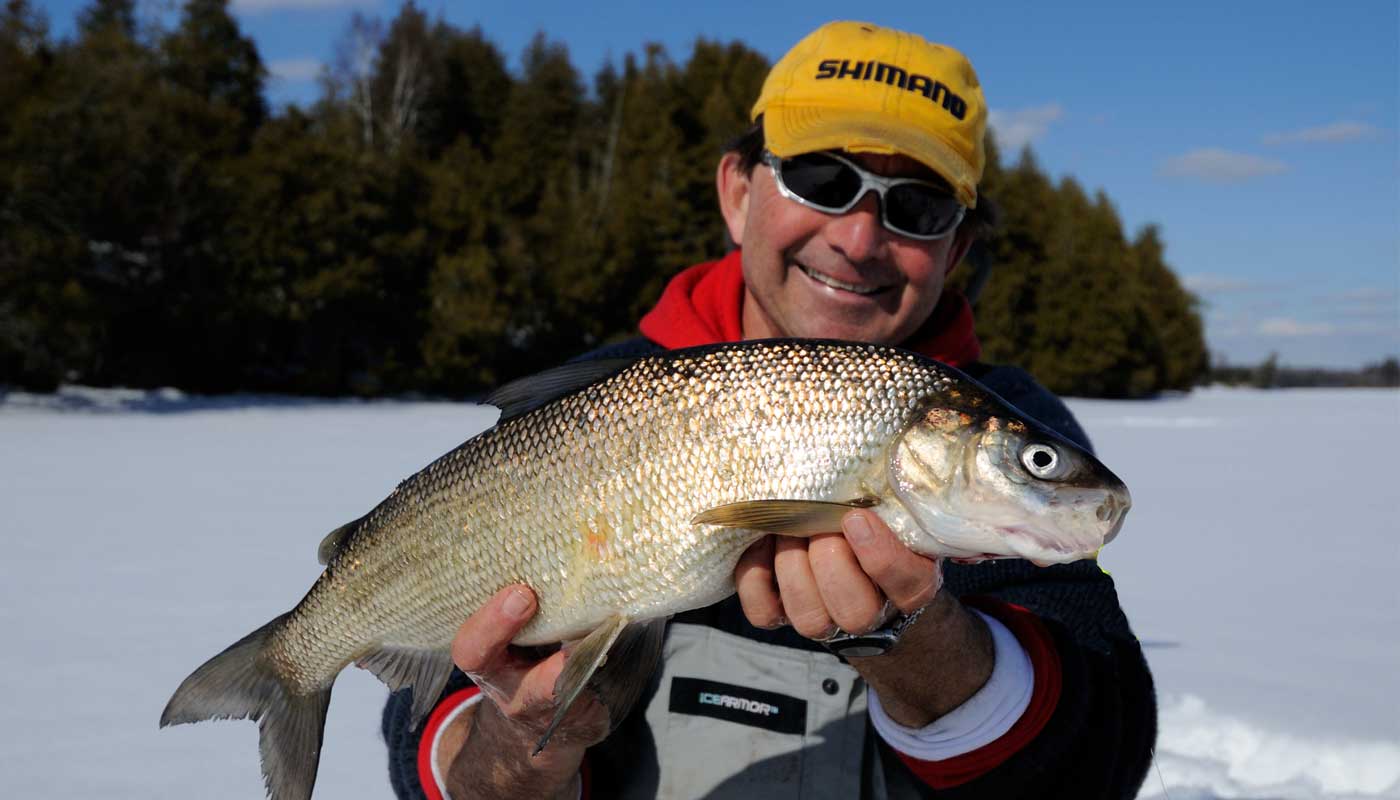
Imagine if I told you there were untold numbers of burgeoning winter fisheries under your nose that no one knows about. It would be a Christmas gift come true, right?
Well, guess what—it's time to open up the gift.
As a matter of fact, whitefish may be the most ubiquitous fish in all of Northern Ontario, thriving in thousands of lakes and rivers, and yet, because so few anglers are aware of their existence and even fewer still know how to catch them consistently, the opportunities go untapped.
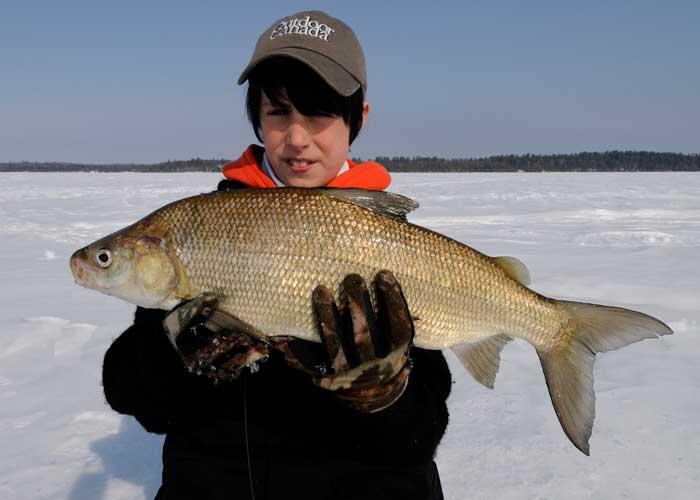
We're not saying that catching whitefish is child's play, but with so many trophy waters across Northern Ontario to choose from, it can be most days.
Case in point: several years ago, a truck carrying petroleum products skidded off the Trans Canada Highway near Kenora and ruptured. To ensure that none of the chemicals leached into a nearby lake, the Ministry of Environment set several test nets to collect fish samples.
The good news is that nothing hazardous reached the waterway. The even better news is that when the technicians lifted the nets, they could barely budge them, they were so full of huge whitefish. I am talking about hundreds of gorgeous whitefish in the four-, five- and six-pound-plus categories.
Here is something else I always find ironic.
Anglers from around the world come to ice fish for whiteys in a handful of Ontario lakes—most notably, Lake Simcoe, Lake Nipissing, Lake Temagami, Lake of the Woods, and several of the bays along the north shore of Lake Superior between Thunder Bay and Sault Ste. Marie. Yet the vast majority of the whitefish lakes in the province go totally untouched.
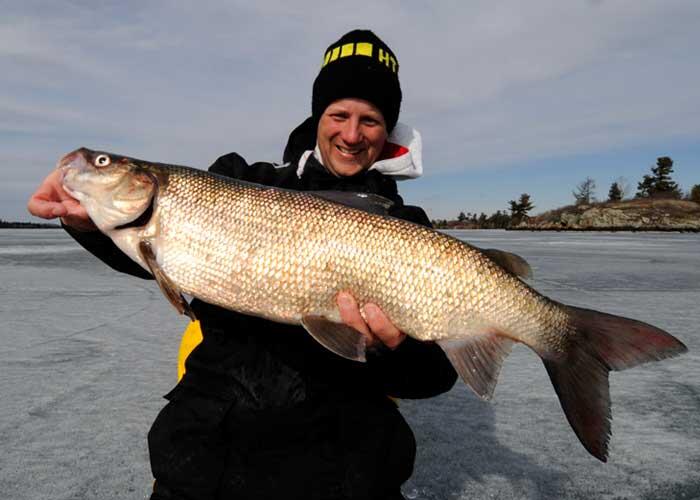
Let's change that right now by tapping into the mind of one of Ontario's elite winter whitefish anglers and prospering from his wealth of wisdom.
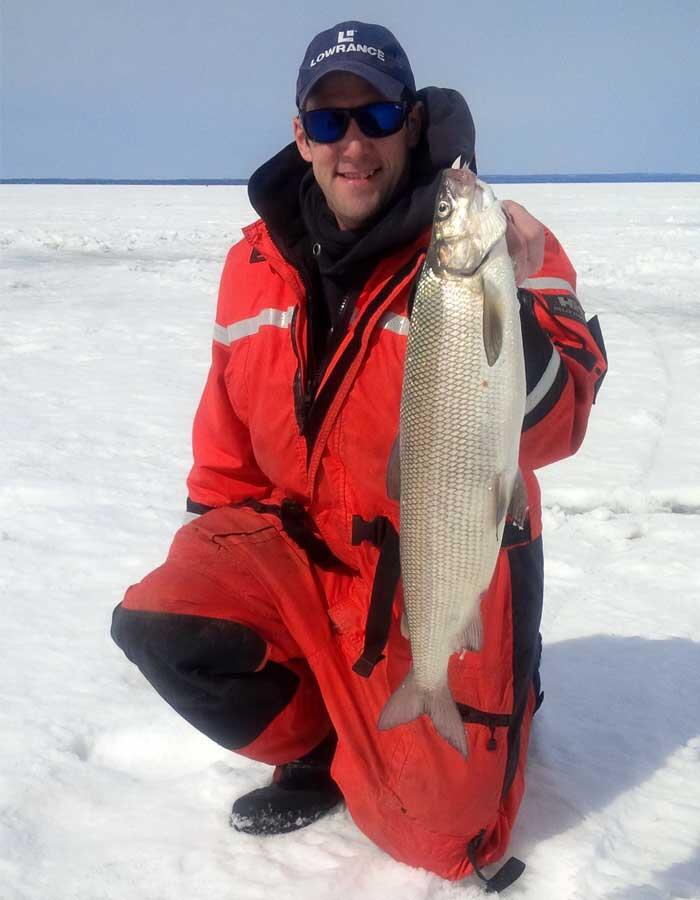
Justin Girard calls massive Lake Simcoe home, and once ice covers the big body of water, you can find him most days inside his portable shelter catching the lake's renowned whitefish.
"I always look for the sweet spot-on-the-spot on top of a shoal," says Girard. "Anywhere you can find a shallow shoal that transitions to a deeper ledge and flattens out to a hard bottom is a great spot for whitefish.

"The top of the shoal might only be 20 to 30 feet deep, but it will produce the best bite early in the morning and remain consistent throughout the winter. I should mention, too, that I look for a hard bottom with a few rocks up on top. Whitefish will be all over this type of structure."
Early in the winter, Girard says you can't go wrong fishing every possible depth and ledge that a shoal has to offer. In fact, at first ice, he says you can find whiteys feeding in many different depths.
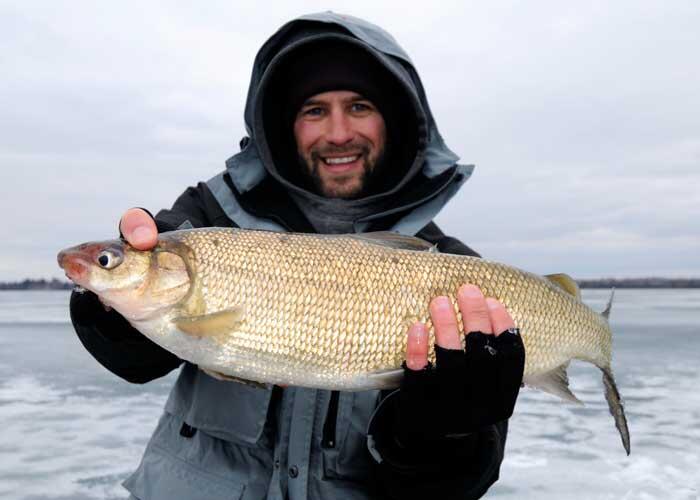
"It's important to stay close to the shoal and drill holes in different depths," he emphasizes, "so you can locate the bigger schools of fish and spots where they are feeding most intensively. When you put in the time and effort to drill additional holes, it will make a difference in your success."
As the season progresses, Girard says he will still start fishing on top of a shoal in the wee hours of the morning as the sun pops up over the horizon. But by midday, if he can't get out for the early bird bite, he'll drill holes and work his way down the sides of the structure, concentrating on any flat ledges and where the shoal merges with the basin.
"It seems like whitefish like to have some time to themselves," Girard chuckles, "but once you find them, you can set up camp and they will come around all day. If you are ice fishing with friends, place your huts in a wide circle, and you will have fun waiting for your turn to come around."
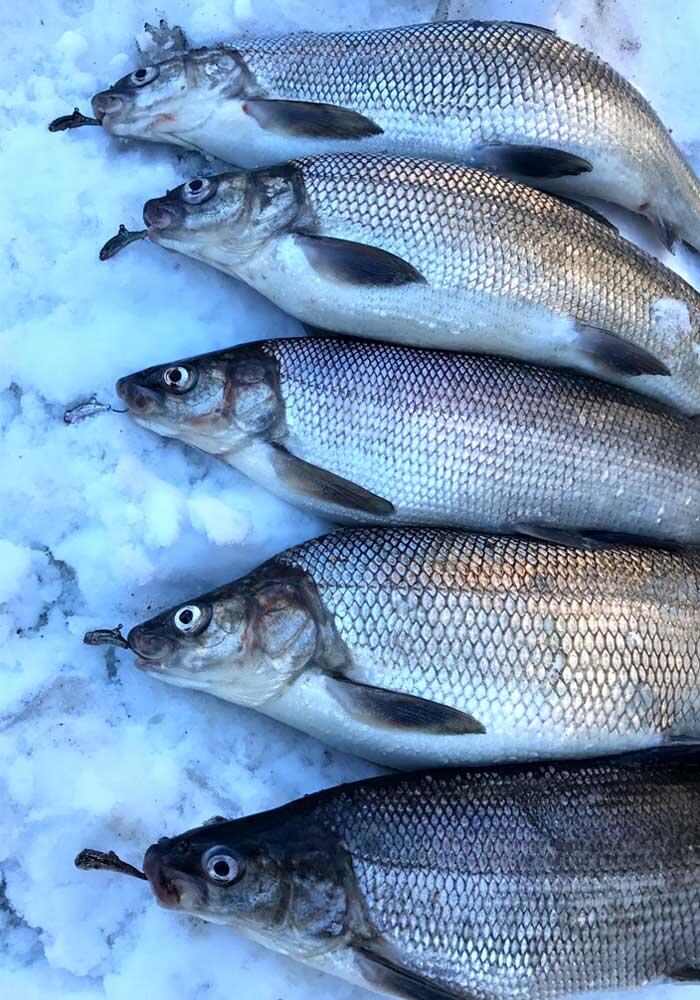
Having pursued whitefish with a passion for so long, it is no surprise that Girard has whittled his selection of baits and lures down to a precious few proven choices. Most notable is the famous Meegs Jig.
"About the only time I don't fish a Meegs Jig," says Girard, "is when I spot the whitefish cruising in the middle of the water column. When they're suspended up like this, they are either not feeding or they are locked in on bugs and larvae. Fortunately, that is not very often. I'd say 95 percent of the time, I can find them hugging the bottom in search of an easy meal of sculpins, gobies, and shiners. No lure mimics this prey better than a Meegs Jig, but you have to present it ever so carefully and properly."
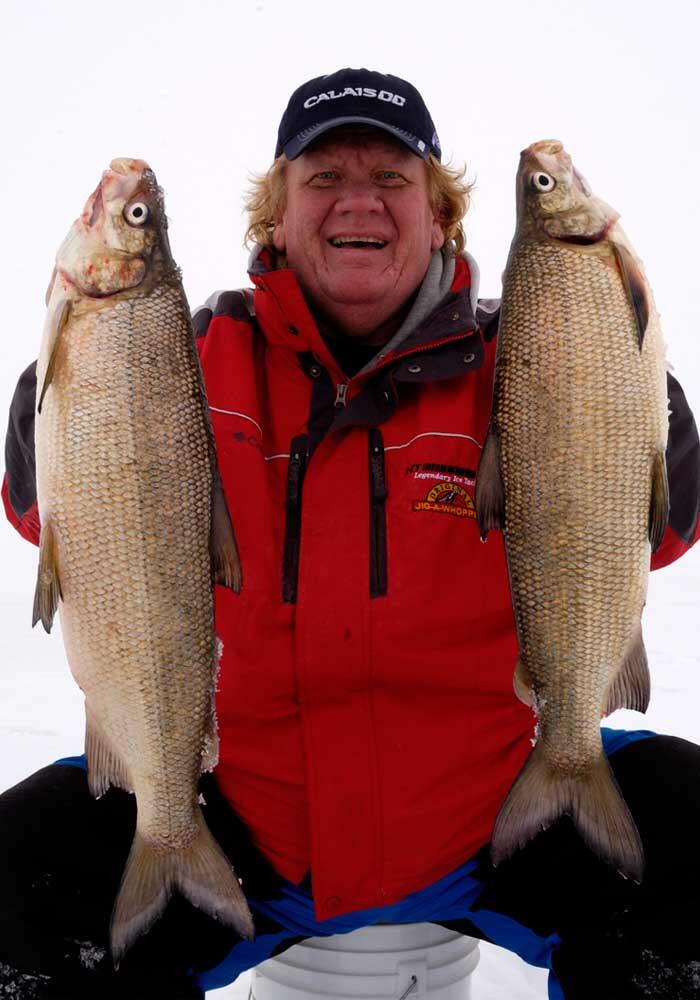
Just Fishing! publisher, Big Jim McLaughlin joined Gord Pyzer and a bunch of friends on a day when they caught and released 300 whitefish.
And what is the proper method? For that, you are going to want to read Part Two of Gord Pyzer's exclusive interview with whitefish aficionado Justin Girard.
Recommended Articles

Predicting Lake Thickness

Eating Northern Pike

10 Facts About Lake of the Woods
Ontario Brook Trout

Top 5 Baits for Smallmouth and Largemouth Bass
Top 5 Musky Destinations in Ontario

The Northern Walleye Dream

3 Great Ontario Walleye Destinations
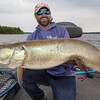
A Multispecies Mecca: Lake of the Woods
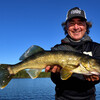
Knock On Wood Walleye
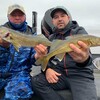
Abitibi Walleye Experience
Top 8 Places to Ice Fish in Ontario

Reaching Deep For Walleye
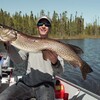
Striker's Point Lodge

Wild Brook Trout

Best WhiteFish Tactics

Big Basswood Lake Resort

Baptiste Bass

